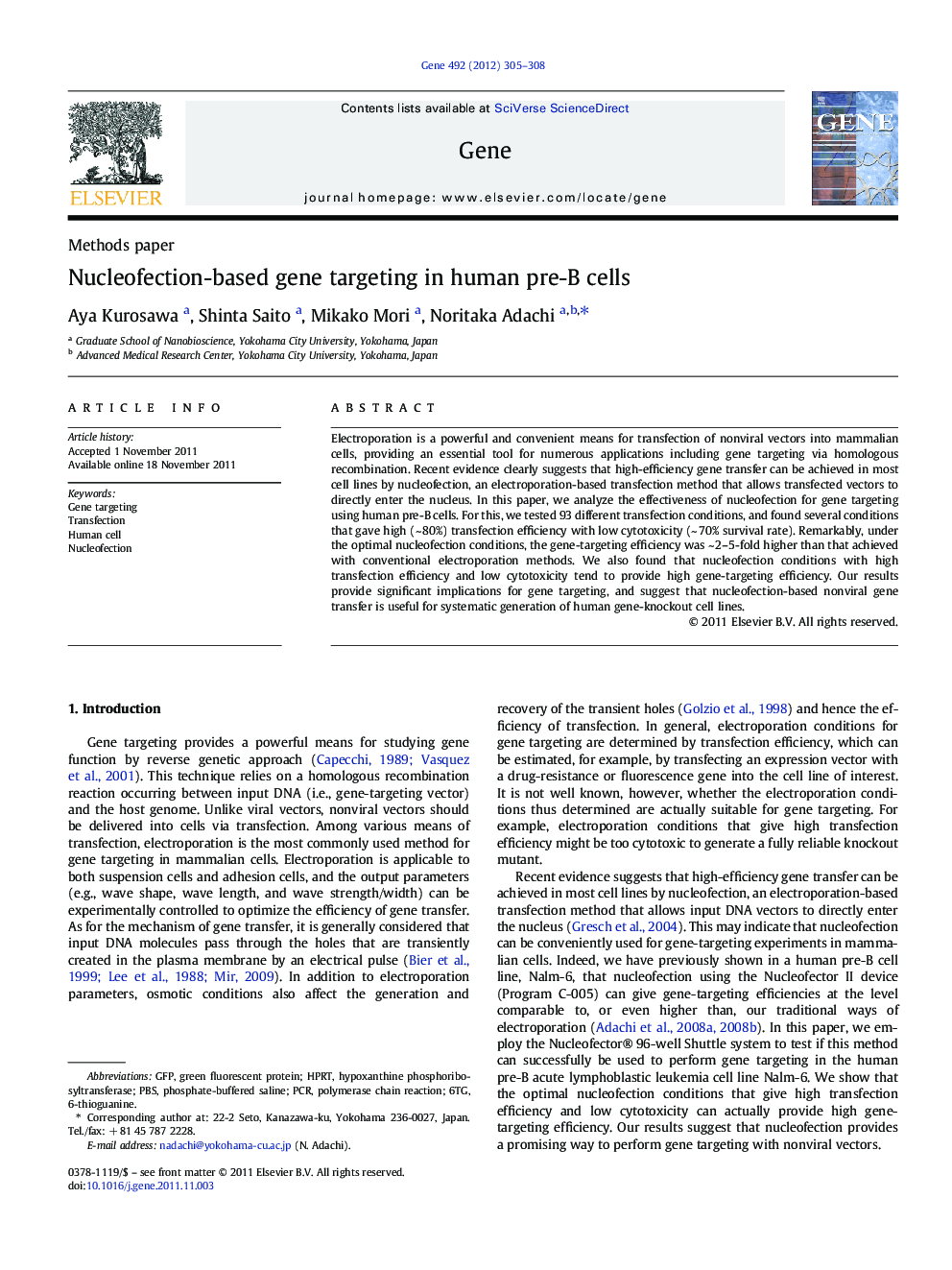| Article ID | Journal | Published Year | Pages | File Type |
|---|---|---|---|---|
| 2818175 | Gene | 2012 | 4 Pages |
Electroporation is a powerful and convenient means for transfection of nonviral vectors into mammalian cells, providing an essential tool for numerous applications including gene targeting via homologous recombination. Recent evidence clearly suggests that high-efficiency gene transfer can be achieved in most cell lines by nucleofection, an electroporation-based transfection method that allows transfected vectors to directly enter the nucleus. In this paper, we analyze the effectiveness of nucleofection for gene targeting using human pre-B cells. For this, we tested 93 different transfection conditions, and found several conditions that gave high (~ 80%) transfection efficiency with low cytotoxicity (~ 70% survival rate). Remarkably, under the optimal nucleofection conditions, the gene-targeting efficiency was ~ 2–5-fold higher than that achieved with conventional electroporation methods. We also found that nucleofection conditions with high transfection efficiency and low cytotoxicity tend to provide high gene-targeting efficiency. Our results provide significant implications for gene targeting, and suggest that nucleofection-based nonviral gene transfer is useful for systematic generation of human gene-knockout cell lines.
